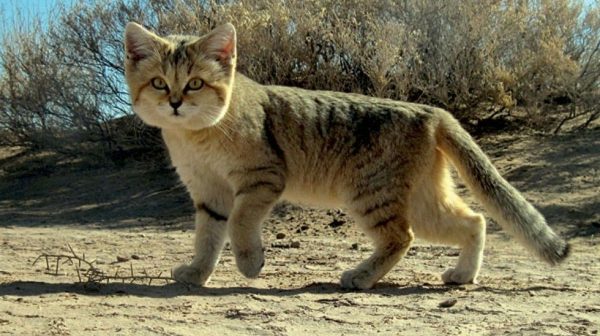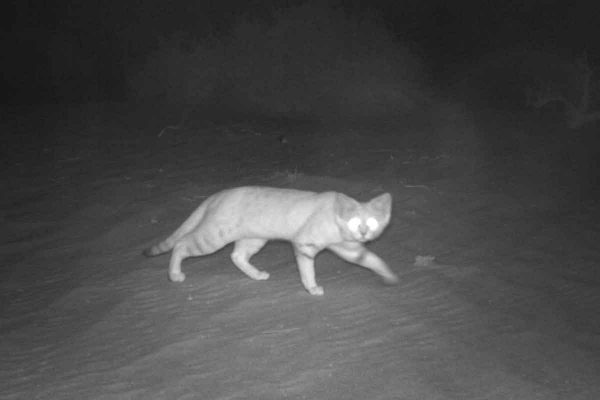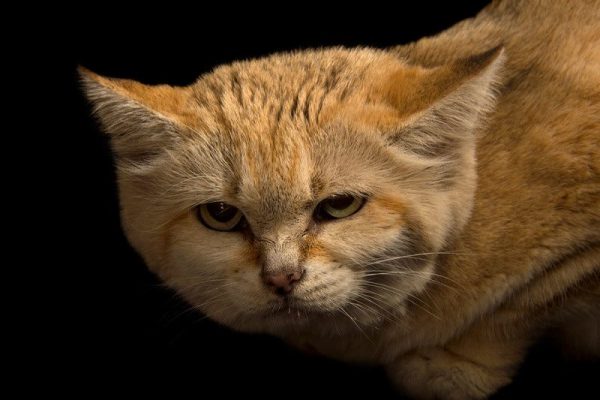
Arabian Sand Cat Confirmed Sighting
The Arabian Sand Cat (Felis margaria harrisoni) has been rediscovered! After a gap of 10 years, using trail camera traps in Baynouna Abu Dhabi, United Arab Emirates, researchers confirmed sighting of the elusive Arabian sand cat also known as Arabian desert cat. A total of 46 photographs were obtained from five camera traps, over 278 trap nights, between March and December in 2015. Three individual Arabian sand cats were recorded of which one was confirmed as a male. Approximately 80% of the sightings were between 0:00 and 06:00 and 39% were recorded during the full moon phase. These were the first confirmed sightings of Arabian sand cat in the Wester Region of Abu Dhabi Emirate after an unconfirmed sighting reported in 2005.

The Arabian Desert Cat aka Arabian Sand Cat
The sand cat is thought to be widely distributed across the deserts of North Africa, Arabia and Central Asia, yet little is known about this small elusive cat. Sand cats are listed as “near threatened” on the International Union for Conservation of Nature (IUCN) red list and as endangered in the United Arab Emirates, where the Al Ain Zoo operates a captive breeding program trying to conserve the species.
“There’s an absence of scientists working on sand cats and very few assessments are being made to assess the behaviour, population and status of the species,” according to John Newby of the Sahara Conservation Fund. “Sand cats are naturally rare,” said Newby. Their populations are thought to be declining due to habitat loss and dwindling numbers of prey species.
a Nocturnal Hunter
The Arabian sand cat is a nocturnal hunter adapted to their desert home. The cats do not need to drink water as they can obtain all they need from small prey such as birds, reptiles and mammals. Special hairs in their ears and on their paws keep the sand from bothering them.
Other sightings on the camera traps included the urchin beetle, and reptiles including Arabian sand skink and gecko. The images show there is plenty of food available for the Arabian desert cat population.

The research team plans to use the images and information to help inform future conservation strategies.
“It is clear that field research will all be extremely valuable in putting together conservations plans for the sand cats and their habitat, as well as pin-pointing those areas and their extent that may be turned into protected areas to conserve the cats,” said Newby. “Scientists need to be doing more research on how the sand cats live in order to create a suitable protected area.”
European Journal of Wildlife Research, DOI: 10.1007/s10344-016-1035-8
The first photo cat isn’t Arabian, This photo is Iranian cat that life near of my home in khur, mesr village
they are so beautiful
I love these cats, and hope to see more about them!
Beautiful cat!
very cute, wonder how it survived all of this time with no one seeing it.